Twine code, keys, and locked doors
CODE
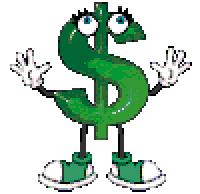 Wouldn't it be great if your Twine game could remember if the player picked up an item? Code will let you do this and much more. Code is special directions for the computer that will not be seen by the player. In Twine, code is written inside of parenthesis:
Wouldn't it be great if your Twine game could remember if the player picked up an item? Code will let you do this and much more. Code is special directions for the computer that will not be seen by the player. In Twine, code is written inside of parenthesis:
(write code inside parentheses, like this)
The first thing that you need is a variable. A variable stores something so that the computer remembers it later. You can store either words or numbers in a variable. A variable MUST start with a dollar sign. The variable $name might contain the player's name, “David”, and the variable $keys might contain the number of keys David has in his pocket, 1.
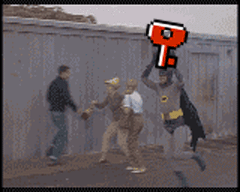
KEYS
You can keep track of the number of keys that the player is holding. At the beginning of the game, in the starting passage, use this set code:
You have one key in your pocket. (set: $keys to 1)
Later if the player finds a key, you can change the stored number with another set code. The code below says to the computer, “Take the number of keys, add two, and set this as the number of keys.”
You found two keys on the floor. (set: $keys to $keys + 2)
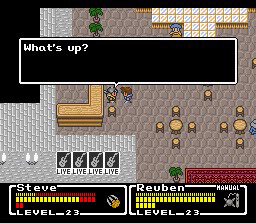
Lose A Key
If you lose a key, you will subtract one key from the total number of keys. The code below says to the computer, “Take the number of keys, subtract one, and set this as the number of keys.”
You lost a key. (set: $keys to $keys – 1)
You can also attach this type of code to a link so that the code only runs when the player clicks on the link. This type of link is called a setter-link. It's a little more complex than a typical link. The code below says, “When the link is clicked, take the number of keys, subtract one, and set this as the number of keys, then continue to the room.”
(link:"Give a key to the old man")[
(set: $keys to $keys – 1)
(goto:"Old Man says Thank You")
]
After "link:" you will type what the link will say and after "goto:" you will type where the player will go next.
You can show the player the number of keys like this:
In your pocket you have $keys keys.
The player will not see the code, $keys. The player will see:
In your pocket you have 2 keys.
If you make a mistake with code, a highlighted error message will show up. For example, if you forget to put the dollar sign in front of the keys variable you will see:
LOCKED DOORS
The best process for creating a locked door will only show the link to unlock the door if a player has keys. When they click the link, it will automatically subtract one key and take them to the next room.
The blue door is locked.
(if: $keys > 0)[
(link:"Unlock the blue door")[
(set: $keys to $keys – 1)
(goto:"Blue Room")
]
]
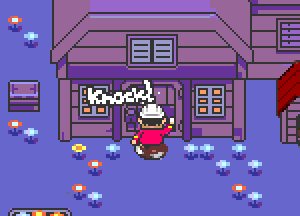 Now let's look at how that works. Variables can determine what the player sees. For more information about variables, you should check out the next post, Twine variables. The player should only be able to unlock a door if they have more than zero keys. You can use the code if to do this. Anything you type between the left square bracket "(if: $keys > 0)[" and the right square bracket "]" is ONLY displayed if the number of keys is greater than zero.
Now let's look at how that works. Variables can determine what the player sees. For more information about variables, you should check out the next post, Twine variables. The player should only be able to unlock a door if they have more than zero keys. You can use the code if to do this. Anything you type between the left square bracket "(if: $keys > 0)[" and the right square bracket "]" is ONLY displayed if the number of keys is greater than zero.
The blue door is locked.
(if: $keys > 0)[
This text is only displayed if you have keys.
]
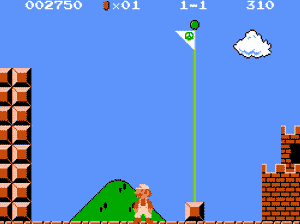
CONTINUE TO THE NEXT POST: Twine variables
RECENT POSTS
- Adding Background Music to Puzzlescript Games
- Baby Zombie Chicken Jockey Java Minecraft Mod
- Raining Chickens Java Minecraft Mod
- Spawn a Pet Wolf Java Minecraft Mod
- Spigot Server for Java Minecraft Mods
- Python Classes to Javascript Classes
- JUnit Tests with Repl.it Teams for Education
- Canvas How to convert an old Quiz Question Bank to a new Quiz Item Bank
- Node Twitterbot Directions
- FogeyBot Thinks Twitter is the Worst
- Detecting Sentence Structure with Regex
- Game-based Learning Presentation
- Hello Jekyll
- Testing 123
- Grading Multi-Select Questions with Google Forms and Google Sheets
- Puzzlescript Rules
- Using Makey Makey to Teach Electricity
- Makey Makey + Scratch Video Game Projects
- Orbit Simulator
- Market game
- TwineFray: A Battle System for Twine
- Sundown
- Twine Games by Middle School Students
- Twine CSS
- Twine Music and Sound Effects from YouTube
- Twine Pictures, GIFs, and Background Images
- Twine Random Numbers
- Tutorial videos for Spreadsheet Functions and Formulas
- How to Program Twitterbots as an Intro to Computer Science
- Podcast Recommendations
- Coding Twitterbots with Middle School Students
- Educational Games on The Internet Archive
- Typing Games in Scratch
- Scratch Tutorial Videos
- Editing videos with Windows Movie Maker
- How to use iMovie for iPad
- Quick and easy DIY pressure plate switch for Makey Makey and Scratch
- Webcam Motion Pixel Art
- Flipped Classroom Scratch Programming Lessons
- BYOD Music Class Using OhioFi Games
- 3 Methods for Going Paperless in the Classroom
- Dodgeball Cat
- How to Automatically Republish a Google Forms Spreadsheet
- The Funeral, a comedy...? by Jon Kovach
- Polaroid cameras that use Fuji Packfilm
- How to Use Google Drive to Store High Scores for Twine Games
- Twine scripts and macros
- Twine style
- Twine logic
- Twine variables